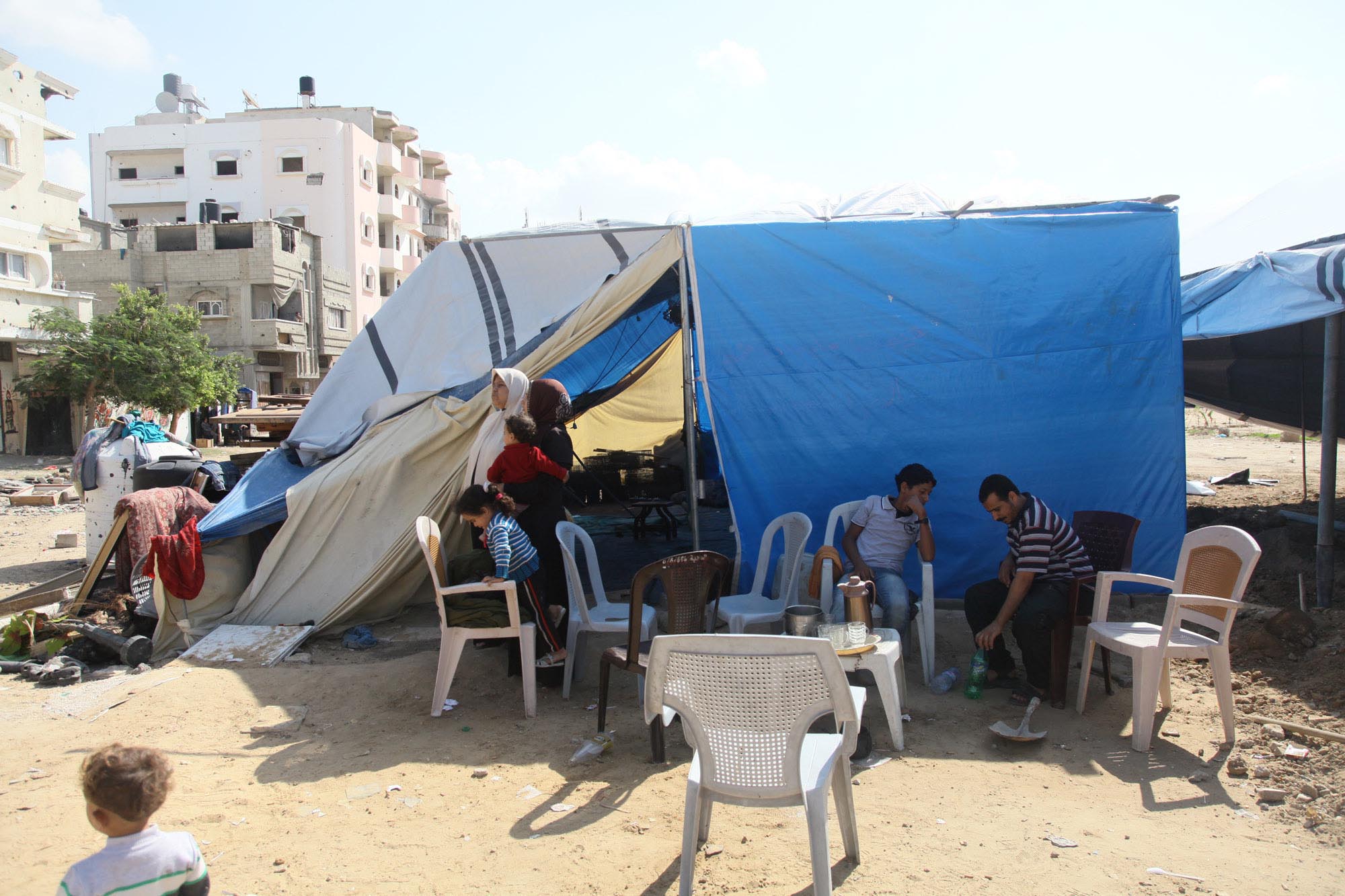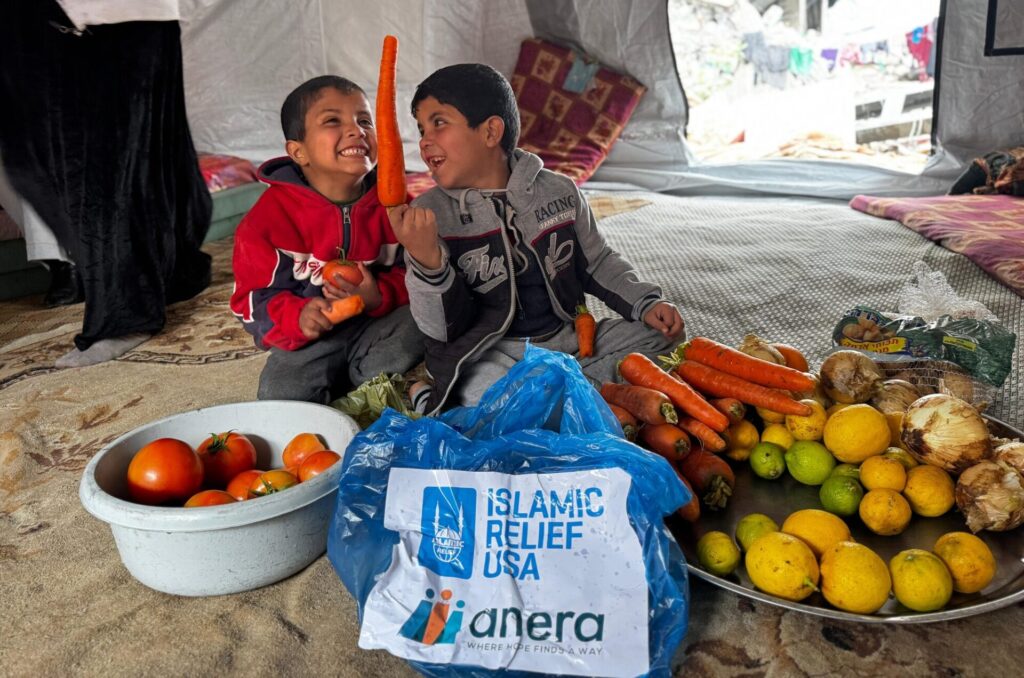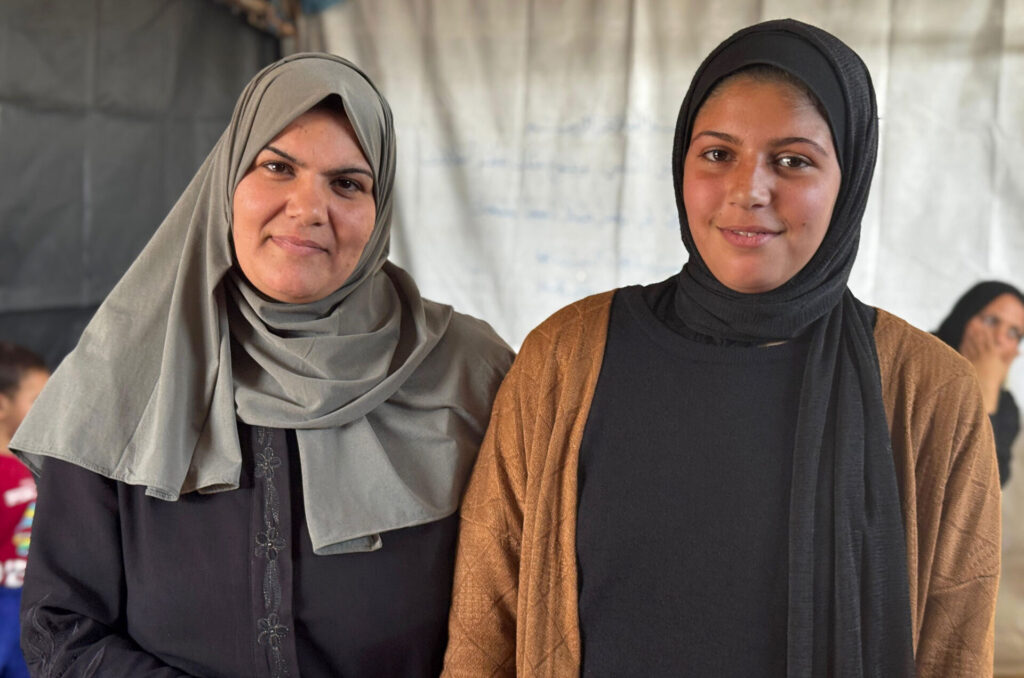Nov, 2014
When you walk around Gaza City, you are reminded of all the people who were forced to leave their homes. In a neighborhood like Al Shejaiya, sadness and poverty shape daily life of the Gaza homeless. People learn to make do in tents. The rubble of their destroyed homes is marked now with names and cell phone numbers written clearly on banners so people will know where they lived and may someday live again.
Siham Jundiyya lives in a tent in Shejaiya with her five children, aged one to 10. She had been living with her extended family in a six-floor apartment building. It was destroyed during the 2014 Gaza war and now she and her family are living in a tent in the open air in front of the rubble.
The family moved into the makeshift shelter after leaving a UN school where they first sought refuge. Hygiene conditions at the school had deteriorated with overcrowding so the family decided it was better to strike out on their own.
They could not afford to fix up or rent a safer place for the family; the huge demand for safe housing has sent rents soaring.
Repairs to their home are not possible as long as there is no cement for rebuilding. So far, access for building materials has been severely limited. Siham’s husband used to work in construction, but he lost his job many months ago when building stagnated due to the lack of materials.
“Our life now is miserable," says Siham. "Our children are sick. We cannot sleep. We are afraid what’s left of our home will collapse any time while our children are playing next to it. But, despite all the challenges, I am thankful because we survived.”
Siham and her mother-in-law hang the children’s clothes on a rope they tied between two trees in front of the tent to try and keep them clean and dry. Pointing to the few clothes hanging over her head, she says, “This is what we were able to salvage from the rubble of our house but they never really dry in this wet, cold weather.”
She worries about her family’s welfare as the cold of winter sets in. When it rains, she is forced to split up her family to seek shelter in different relatives’ homes.
When the weather is good, her 10-year-old son Abdel Jabbar plays with his friends after school. Abdel and his friends use their imaginations to create games and forget about their new, harsh reality.
And yet, Siham manages to find some reason to hope for a better future: “When people living through the same crisis come together, they give each other support to carry on. And, we will.”




